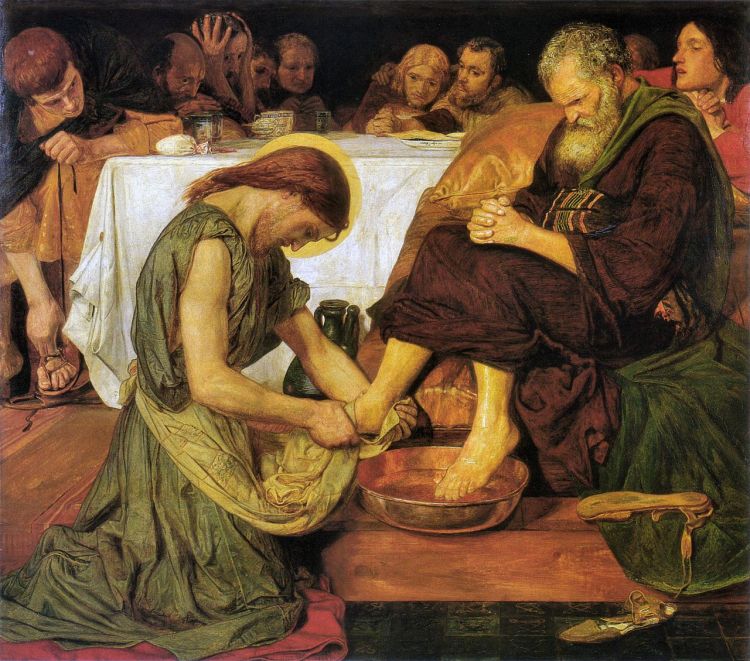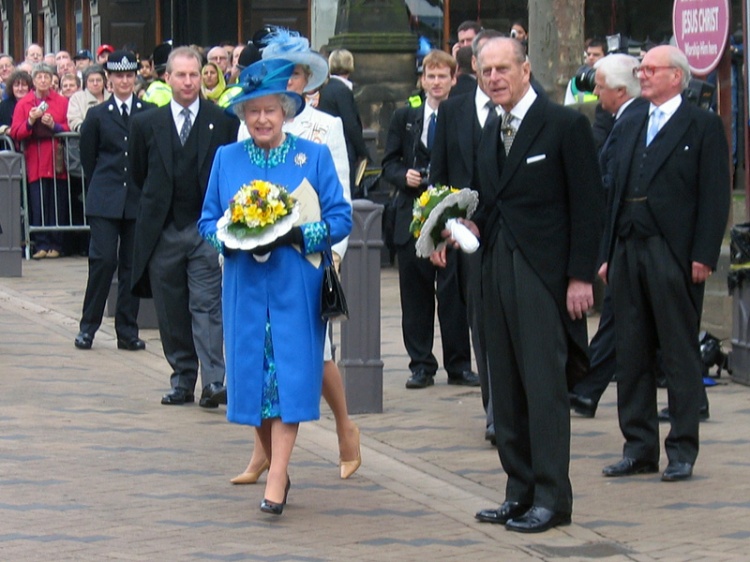Often in the shadow of Christmas due to the rampant over-commercisation, it is often forgotten that Easter Sunday is the culmination of Holy Week. Easter commemorates the resurrection of Jesus Christ. It is the most important Christian festival, and the one celebrated with the greatest joy. As we approach the annual 4-day Easter holiday weekend I thought it would be interesting to look at the tradition of Maundy Money.
The Royal Maundy is an ancient ceremony, inspired by The Bible. As the Head of the Anglican Church, the Queen has various religious duties which she takes very seriously, this being one of them.
On the day before Good Friday, Jesus washed the feet of his disciples and commanded them to ‘Love one another’. Since at least the thirteenth century, the Royal Family have been taking part in similar ceremonies known as Royal Maundy. By washing the feet of the poor and giving them money and gifts, the monarchs were showing humility and compassion.

When Henry IV became king, he introduced a new tradition, deciding to give the same number of gifts as his age. So, for instance, when the monarch was 35, he gave 35 of his subjects Maundy gifts. It became the custom for the sovereign to perform the ceremony, and the event became known as the Royal Maundy.
The first Maundy money ceremony took place in the reign of Charles II, when the king gave people undated hammered coins in 1662. The coins were a four penny, three penny, two penny and one penny piece. By 1670 the king started giving out a dated set of all four coins.
The tradition of the king or queen washing the feet of the poor faded out in the eighteenth century, but the monarch still gave people food and clothing. By the nineteenth century the tradition had changed again, and the monarch simply gave people the Maundy money.
Maundy money is traditionally made of sterling silver and the coins given out today by The Queen will continue this long-held tradition.

During Her Majesty The Queen’s reign, her portrait on ordinary circulating coinage has been updated four times. However, Maundy money still bears the same portrait of Her Majesty created by Mary Gillick that appeared on the first coins of her reign in 1953.
Today’s recipients of Royal Maundy are elderly men and women, chosen because of the Christian service they have given to the Church and the community. The ceremony takes place every Maundy Thursday. There are as many recipients as there are years in the sovereign’s age.

The Order of Service for Royal Maundy is a simple one. It begins with the reading of John 13:34, which contains the mandatum from which Royal Maundy evolved. It contains two lessons, the first of which (John 13) also recalls the mandatum. The second reading contains that portion of Matthew 25 which describes the Last Judgment. The Queen makes half of the presentations after the first lesson, and half after the second. Anthems, led by the Chapel Royal choir and the local choir, are sung while the distribution is going on, concluding with George Frideric Handel‘s coronation anthem Zadok the Priest. The Royal Maundy service concludes with prayers, “God Save the Queen” and the blessing. Two hymns are sung; there is no address.
Six silver dishes are used to hold the gifts; one, the traditional Maundy Dish, forms part of the Royal Regalia and is held at the Tower of London when not in use. All six dishes date from the reign of Charles II; five of the six have been added to the service since 1971. They are held by the Yeomen as the Queen walks about, greeting recipients and giving them their gifts.
At the ceremony, the monarch hands each recipient two small leather string purses. A red purse contains ordinary coins, while a white one contains silver Maundy coins, amounting to the same number of pence as the years of the sovereign’s age.

Reblogged this on Pete's Favourite Things and commented:
A very appropriate topic for today.
LikeLiked by 1 person
Reblogged this on sed30's Blog and commented:
Interesting
LikeLiked by 1 person
Another fascinating post. A job that must grow ever more lengthy as the Queen ages.
LikeLiked by 1 person
Thankyou. Yes she must be carrying plenty of coins in those bags these days compared to 60 years ago.
LikeLiked by 1 person
This part of your history is very interesting to both me and my husband, who is an Anglican priest (Episcopal) here in the USA. We also celebrate Maundy Thursday and Good Friday is very somber with the altar being bare, preparing for Easter Sunday when it is flooded with flowers and the choirs are at their best….very inspirational! Happy Easter and blessings from Nancy at Boyer Writes
LikeLiked by 1 person
Thank-you Nancy. Yes I attended what we call the Liturgy of the Cross on Good Friday which is a very dramatic and sombre service. There are also vigils through the night on Maundy Thursday and Holy Saturday before everything comes to life again today on Easter Sunday. Then tomorrow (Monday) which like Friday is a holiday here, many will walk on a mini pilgrimage to the local Abbey Cathedral at St. Albans. It is a fascinating tradition that the Queen follows and symbolically illustrates some piousness from the head of the Church and sovereign of the nation. With the exception of The Pope and the Dalai Lama it is hard to imagine another world leader doing this and it is good to remind people the the Monarch isn’t just about wealth and power and tradition but about faith too.
LikeLike